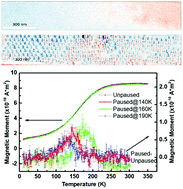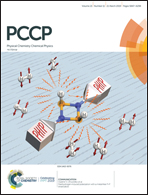Manipulation of dipolar magnetism in low-dimensional iron oxide nanoparticle assemblies
Abstract
The manipulation of magnetic states in nanoparticle supercrystals promises new pathways to design nanocrystalline magnetic materials and devices. Trench-patterned silicon substrates were used as templates to guide the self-assembly of iron oxide nanoparticles. Grazing incidence small angle X-ray scattering shows that the nanoparticles form a long-range ordered structure along the trench direction while in the direction perpendicular to the trenches, no coherent structure is observable. Electron holography provides evidence of an ordered magnetic state of nanoparticle moments in the remanent state after the application of a saturation magnetic field parallel to the trenches. However, a disordered magnetic state was observed in a perpendicular geometry. Hysteresis loops indicate that the nanoparticle moments form a superferromagnetic state for the geometry parallel to the trenches. Memory effect investigations reveal that the disordered magnetic state corresponds to a collective superspin glass state in the perpendicular geometry, while the superferromagnetic state in the parallel geometry suppresses the superspin glass state.



 Please wait while we load your content...
Please wait while we load your content...